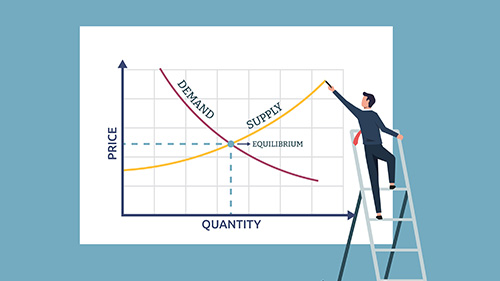Top 5 Tips for the AP® Econ Exams
So, it’s almost time for the AP Economics exams. Hopefully, you have started a countdown. If not, that is step one. You want to remind students (so...
AP & Honors Mathematics
Explore Wiley titles to support both AP and Honors mathematics instruction.
Literacy Skills & Intensive Reading
Connections: Reading – Grades 6–12
Empower student success with a proven intensive reading program that develops strong reading skills in striving readers.
Drama, Speech & Debate
Basic Drama Projects 10th Edition
Build students’ confidence and competence with comprehensive, project-based theatre instruction.
Literature
Connections: Literature
Support learners as they study dynamic, relevant texts and bring the richness of diverse voices to students through literature.
Literature & Thought
Develop critical thinking, reading, and writing across literacy themes, genres, historical eras, and current events.
Language Arts
Vocabu-Lit® – Grades 6–12
Help students build word power using high-quality contemporary and classic literature, nonfiction, essays, and more.
Connections: Writing & Language
Help students develop grammar, usage, mechanics, vocabulary, spelling, and writing and editing skills.
Reading/English Language Arts
Measuring Up to the English Language Arts Standards
Incorporate standards-driven teaching strategies to complement your ELA curriculum.
English Language Learners
Measuring Up for English Language Learners
Incorporate research-based best practices for ELLs with an approach that includes a focus on language acquisition strategies.
Mathematics
Measuring Up to the Mathematics Standards
Incorporate standards-driven teaching strategies to complement your mathematics curriculum.
Foundations
Measuring Up Foundations
Help students master foundational math skills that are critical for students to find academic success.
Science
Measuring Up to the Next Generation Science Standards
Give students comprehensive NGSS coverage while targeting instruction and providing rigorous standards practice.
Assessment
Measuring Up Live
Deliver innovative assessment and practice technology designed to offer data-driven instructional support.
For a better website experience, please confirm you are in:
4 min read
Nick Anello Apr 14, 2022 11:14:26 AM

There is less than a month until the AP® Econ exams. It is crunch time for students—especially those taking multiple AP® exams. These exams can be a very stressful time for everyone (I am sure you are getting anxious as well). A year’s (or semester’s) worth of work comes down to a few hours in May to earn college credit. For students, there can be a lot of pressure coming from parents, teachers, peers, and themselves. You may be feeling pressure from department leads, administrators, parents, community members, and/or school boards. It’s OK to recognize this.
Good, that is out of the way. Now, breathe. Breathe again… Keep breathing. Oxygen is good for you and your brain.
Chances are, you and your students are going to provide or partake in cram sessions. These can be good refreshers and can really help students gain the confidence to perform their best on the exams. I always liken these sessions to riding a bike. I usually tell students something like this, “We learned these graphs before. We tested on these graphs and material before. You tested well on these concepts before. Now, we just must revisit these graphs, materials, and concepts to wake up those connections in your brains.”
With that said, let’s learn how to cram.
OK so you might be thinking, "Nick, I thought that this was going to be a cram session post. You haven’t even mentioned actual content or cramming topics yet. I feel cheated and I am going to stop reading now.’"
Yes, there is a purpose to that. You need to start with relaxing students with formalities and logistics. This will help calm them down, perhaps, in a "cram" session. If you get straight to content and just RUN through everything, students’ anxiety levels will only increase. Remember when I said that everyone is stressed? Find ways to lower that stress level first. The content will come, and there is a lot of it.
Let’s continue.
Your students have worked hard all year. You have worked hard all year. Now, use these tips to get your students over the finish line. Good luck to you. You have done a great job!
Nick Anello has taught AP® Economics for nearly a decade at Homewood-Flossmoor Community High School in Flossmoor, Illinois, in addition to teaching IB SL Economics. He holds two Bachelor of Arts degrees from Loras College in Dubuque, Iowa, and two Master of Arts degrees in General Administration and Curriculum & Instruction from Governors State University in University Park, Illinois. He has led professional development programs at local, state, and national levels on the teaching of economics. In 2017, he received the 3M and Econ Illinois Outstanding Economics Educator award. He also served as a member of the AP Instructional Design Team during the most recent curriculum update.

So, it’s almost time for the AP Economics exams. Hopefully, you have started a countdown. If not, that is step one. You want to remind students (so...

We want students to discover and wonder about the world around us. That is at the core of social science education. How do we explain the world...

Let’s face it, poorly answered free response questions are hard on both teachers and students. Most students shudder at the thought of answering the...

Over the years I’ve come to realize that, like any other subject, Macroeconomics is best retained when connections are made. It is for this reason...

It's the middle of the school year. The students you had hooked ever since your first week of activities are now starting to feel the grind of the...

Teaching Advanced Placement® classes can be daunting. You’ll ask yourself questions like “what is the rigor?”; “How do I test them?”; “Should I stick...

Inflation is defined as a rise in the general level of prices over time. For some students, it can be difficult to comprehend unless they actually...

You may have heard about the “Irish” Thesis Formula—it is all over the internet. Some teachers like it, others hate it, but whatever you think about...

This year’s AP Psychology Exam will be the first exam with the new curriculum which focuses intensely on research. Some may wonder about this focus...

It’s about that time. The Advanced Placement® Government & Politics Exam is around the corner. I’m sharing my top five tips to help you prepare...

The Supreme Court question on the AP Government exam, a mandatory component, consistently challenges students to demonstrate a nuanced understanding...

Review season is upon us. With preparations for upcoming AP exams, finals, and other year-end assessments principals in cognitive science can help...
